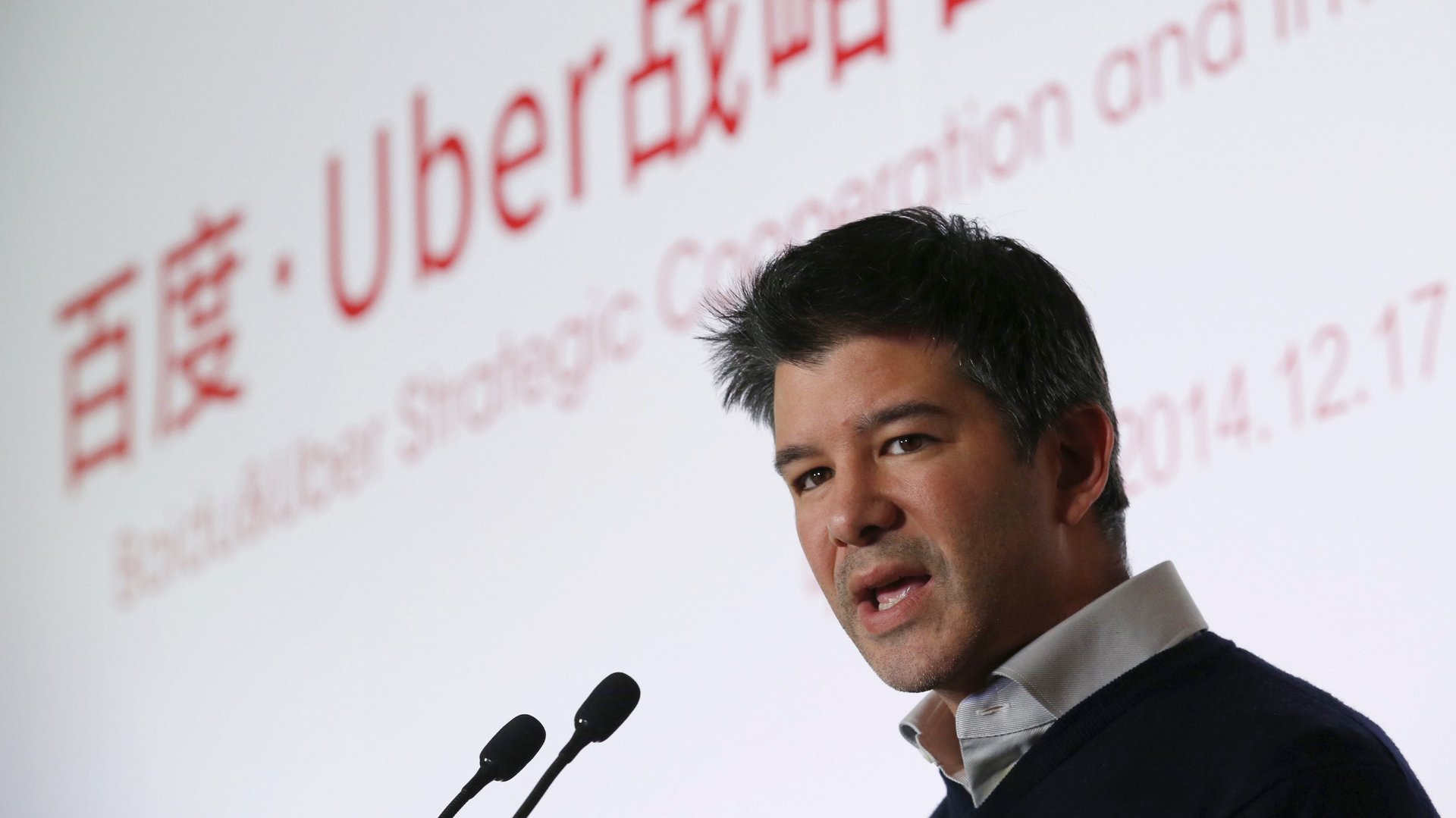It’s time for Uber to show it’s more than just a glorified taxi company
Uber’s quest to conquer the global ride-hailing market is starting to come undone.


Uber’s quest to conquer the global ride-hailing market is starting to come undone.
On Monday (Aug. 1), Uber ceded China to Didi Chuxing, the country’s most popular ride-hailing service, ending a lengthy and expensive battle. Wednesday brought another setback. Didi and Softbank are reportedly set to invest up to $600 million in Grab, Uber’s chief competitor in Southeast Asia.
Uber’s $62.5 billion valuation largely rests on expectations that it will be the global leader for a new mode of shared transportation. But the events of this week have called that outlook into question. China was the holy grail of Uber’s ride-hailing ambitions, with a potential market estimated to equal, if not exceed, the rest of the world combined. Even if the Middle Kingdom ultimately proves an outlier, Uber may have a tough time reassuring investors of its path to global ride-hailing dominance when it lost the battle there so publicly and so quickly.
More than ever, Uber needs another compelling reason to justify its lofty valuation. Fortunately, it already has one: logistics.
While Uber is best known for moving people, it has also slowly been building out services that transport goods. It has UberRush, a delivery platform for small businesses (and, in New York, also a messenger service), as well as UberEats, a food delivery program much like Grubhub. Both Uber and Lyft are also trial partners in a program to deliver groceries for Walmart.
Internally, Uber groups its non-ride-hailing services into a division known as ”UberEverything.” The name recalls a comment Uber CEO Travis Kalanick made to Vanity Fair in December 2014: “If we can get you a car in five minutes, we can get you anything in five minutes.”
Finding drivers to pick up and deliver food is one thing, but what makes Uber think it can be a real player in the global supply chain? Broadly, the argument is that the knowledge Uber has acquired by completing more than 2 billion trips for humans—how to navigate city streets, negotiate traffic, and efficiently dispatch vehicles—will also inform its efforts to make deliveries.
The market for transportation and logistics is massive—$1.45 trillion in the US alone in 2014. Within that, Uber would most likely operate in the segment known as “express delivery services,” itself an estimated $76 billion opportunity.
With its supply of drivers and sprawling footprint, Uber could particularly excel at transporting goods over the so-called “last mile,” something no single company has been able to master. Kozmo and Webvan went down that road during the first dot-com bubble, and became iconic flameouts in the process; a new wave of startups like Instacart and Postmates have also so far failed to become household names. Online giants haven’t fared much better. In July 2015, eBay shuttered its on-demand delivery service eBay Now. Google’s e-commerce division has lost a string of top executives, and its same-day delivery service last August closed two hubs in California.
Even the logistics juggernauts—UPS, FedEx, Amazon—have yet to crack the code on near-instantaneous deliveries. Amazon comes closest with its two-hour Prime Now, but that is still only available in limited markets and for limited items. The company is making big bets that drones will change the game.
Were Uber able to establish itself as a reliable and ubiquitous provider of on-demand deliveries, the business opportunities would be tremendous. To start, Uber could win business from many of the brick-and-mortar retailers who are seeing their in-store sales decimated by Amazon, but struggling to get their own e-commerce efforts off the ground. Uber could also become a go-to logistics platform for all of the small businesses looking to make the leap online. And while the barriers to ride-hailing are relatively low, a logistics platform of that magnitude would be much tougher to disrupt.
Take a closer look at Kalanick’s rhetoric around the Uber-Didi merger, and you’ll see logistics is a repeated theme. On Facebook, he wrote that the deal frees up ”substantial resources for bold initiatives focused on the future of cities—from self-driving technology to the future of food and logistics.” In Uber’s official announcement on Aug. 1, Kalanick compared his ambitions for Uber in China to “the opportunity to build both Amazon and Alibaba at the same time”—two fulfillment giants.
Uber is undeniably a dominant player in the ride-hailing world, but after its concession to China, that’s no longer enough. It needs to move onto—quite literally—other things.